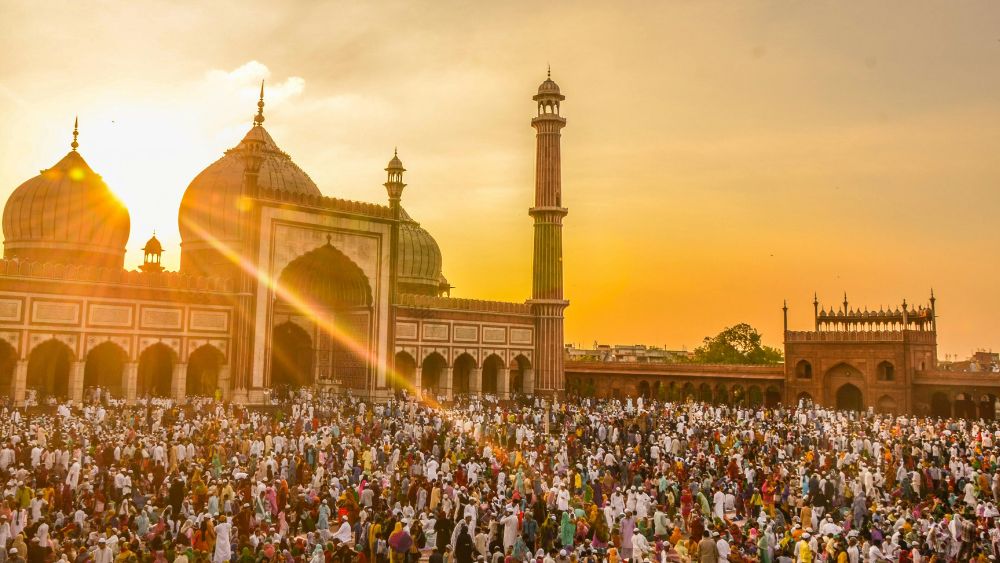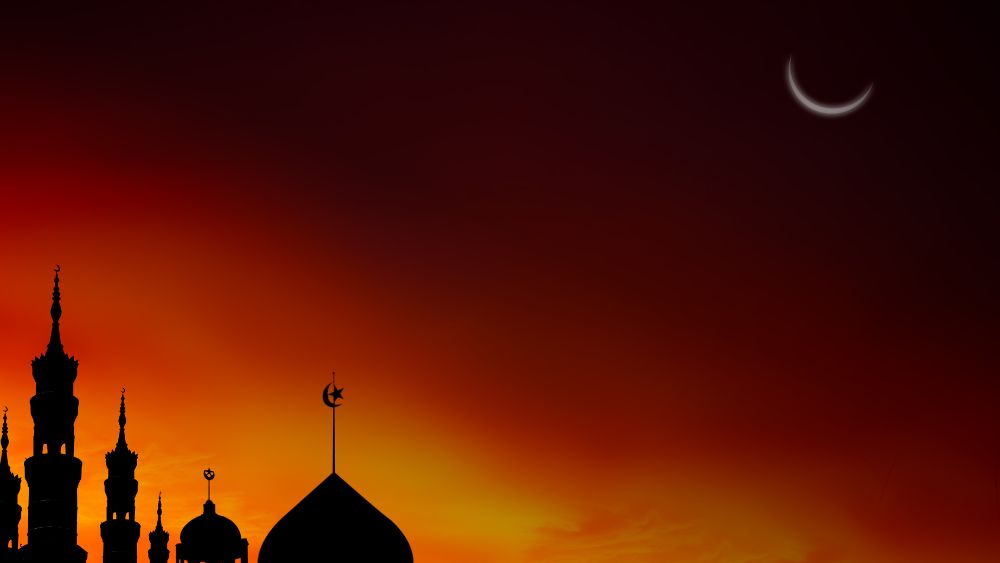How to Perform Eid Al-Fitr: Celebrate Eid within the Islamic Guidelines

Eid Al-Fitr is one of the two major Islamic festivals celebrated each year. It marks the end of the holy month of Ramadan, a time of fasting, devotion, and self-discipline. As a reward from Allah, Muslims worldwide celebrate Eid with joy, gratitude, and generosity. On this special day, we perform the Eid prayer, give Sadaqatul Fitr, and spend time with family and friends.
If you’re wondering when is Eid Al-Fitr 2026, how to perform the Eid Al-Fitr prayer, what is the purpose of Eid ul-Fitr, or when is Eid after Ramadan, this guide will cover everything you need to know.
Origin of Eid Al-Fitr
Anas bin Malik said: “The people of the Jahiliyyah had two days each year when they would play. When the Messenger of Allah (ﷺ) came to Al-Madinah he said: ‘You had two days when you would play, but Allah (SWT) has given Muslims something instead that is better than them: the day of Al-Fitr and the day of Al-Adha.'” [Sunan an-Nasa’i 1556]

What is the Purpose of Eid Al-Fitr?
Eid Al-Fitr, often referred to as the “Festival of Breaking the Fast,” is a day of gratitude and joy. After a month of fasting, prayer, and self-discipline, Muslims celebrate this day to thank Allah for granting them the strength to complete Ramadan. It is also a time for giving, as charity plays a central role in Eid celebrations.
Prophet Muhammad ﷺ emphasized the significance of Eid ul-Fitr by encouraging Muslims to engage in prayer and charity and strengthen relationships with family and friends.
When is Eid Al-Fitr 2026?
The first of Shawwal marks Eid Al-Fitr in the Islamic calendar. The date of Eid Al-Fitr 2026 (1447H) depends on moon sighting and location. It is expected to fall on Friday, March 20 2026, but if the moon is not sighted, it may be observed on Saturday, March 21 2026.

Preparing for Eid Ul-Fitr Prayer
The morning of Eid is a special time filled with excitement and gratitude. Before heading to the prayer ground, there are several recommended Sunnah acts that enhance the experience:
1. Perform Ghusl (Ritual Purification): Taking a full-body shower before the Eid prayer is a recommended Sunnah.
2. Wear Your Best Attire: If you have new clothes, wear them. Otherwise, wear your best and cleanest outfit. [Majmoo Al Fatawa: 13/2461]
3. Put on Fragrance: It is recommended that you wear an Attar or Fragrance on Eid day.
4. Eat an Odd Number of Dates: Before going for Eid prayer, eat odd number of dates as a part of the Sunnah of Rasulullah ﷺ. [Sahih Al Bukhari: 953]
4. Give Zakat al-Fitr: Before performing the Eid prayer, it is obligatory to give Zakat al-Fitr, a special form of charity that is an expiation for the mistakes made during Ramadan and ensures that the less fortunate can also enjoy Eid. To know more about Zakat al-Fitr, kindly read this article.
5. Recite the Takbeer of Eid ul-Fitr: It is Sunnah to recite the Eid takbeer on the way to the prayer ground:
اللَّهُ أَكْبَرُ اللَّهُ أَكْبَرُ لَا إلَهَ إلَّا اللَّهُ. وَاَللَّهُ أَكْبَرُ اللَّهُ أَكْبَرُ وَلِلَّهِ الْحَمْدُ
Transliteration: Allahu Akbar, Allahu Akbar, La ilaha illa Allah, Allahu Akbar, Allahu Akbar, wa Lillahil hamd.
Meaning: “Allah is the Greatest, Allah is the Greatest, there is no deity except Allah, Allah is the Greatest, Allah is the Greatest, and to Allah belongs all praise.”
You can also watch the video for quick learning.
How to Perform Eid Al-Fitr Prayer?
The Eid prayer is a special two Rak’ah congregational prayer. It is ideal to perform in an open ground but also permissible in mosques. It includes an extra six or twelve Takbeers, depending on your Madhab and local practice. Here’s a step-by-step guide:
Step 1: Intention (Niyyah) and Wudu
As with any prayer, begin with a sincere intention in your heart to perform the Eid prayer for the sake of Allah. Make Wudu before standing in Eid prayer.
Step 2: The First Rak’ah
- Takbeer al-Ihram: Start the prayer by raising your hands and saying “Allahu Akbar”.
- Additional Takbeers: Say ‘Allahu Akbar’ an additional three or seven times after the Imam(depending on your local practice).
- Recitation: After the Takbeers, the Imam will recite Surah Al-Fatihah, followed by another surah (commonly Surah Al-A’la).
- Ruku and Sujud: Complete the bowing and prostration as in regular prayers to finish the first Rak’at.
Step 3: The Second Rak’ah
- Upon standing for the second rak’ah, the Imam will recite Surah al Fatihah followed by another Surah (commonly Surah Al-Ghashiyah).
- Say 3 or 5 more Takeers (depending on your local practice) after the Imam.
- If you are praying with 12 Takbeers, the 5 Takbeers will be first followed by the recitation of Surah Fatihah and another Surah.
- Go to Ruku with the Imam on the last Takbeer.
- End the prayer with Tashahhud and Tasleem (salutation).

The Khutbah (Eid Sermon)
After the prayer, the Imam delivers a sermon (khutbah), reminding Muslims about gratitude, generosity, and continuing good habits beyond Ramadan.
What to Say in Eid Greetings?
The Sunnah greeting for Eid is:
تَقَبَّلَ اللَّهُ مِنَّا وَمِنْكُمْ
Transliteraton: “Taqabbal Allahu minna wa minkum”
Meaning “May Allah accept [good deeds] from us and from you.” [Fathul Bari: 2/517]
It is also common practice to say “Eid Mubarak” throughout the Muslim world. There is nothing wrong in saying that.
Expressing joy and spreading kindness is at the heart of Eid celebrations.

How to Celebrate Eid Al-Fitr?
Beyond the prayer, Eid is a day filled with celebration, family gatherings, and acts of kindness. Here are some ways you can make the most of this blessed occasion:
1. Visit Family and Friends: Strengthen bonds by spending time with loved ones.
2. Prepare Special Meals: Enjoy traditional dishes that mark the festivity of Eid.
3. Give to Charity: In addition to Zakat al-Fitr, consider giving Sadaqah (voluntary charity) to those in need.
4. Engage in Festivities: Communities often organise Eid carnivals, picnics, and other events to celebrate together.
P.S. Beware of involving in Haram activities during the Eid celebration. Remember the lessons from Ramadan and celebrate Eid in moderation within the boundaries of Shariah.

FAQs
Q. Is it mandatory to perform Eid prayer?
Ans. There is a difference of opinion among the scholars whether Eid prayer is mandatory or simply Sunnah. We strongly discourage you from missing the Eid prayer unless it is an emergency.
Q. Is it mandatory to perform Ghusl on Eid day?
Ans. Ghusl on Eid is recommended (mustahabb) but not obligatory. But we suggest you do it as it was the Sunnah among the Sahaba.
Q. Is it mandatory to listen to Eid Khutbah?
Ans. There is a difference in opinion as to whether listening to the Eid Khutbah is Mandatory or simply recommended. To avoid confusion, it is best to listen to it.
Conclusion
As Eid Al-Fitr approaches, take this opportunity to deepen your connection with Allah and strengthen your bonds with family and friends. Understanding how to perform Eid ul-Fitr prayer, the Takbeer of Eid Al-Fitr, and what to say in Eid greetings ensures a more fulfilling experience.
Let’s enjoy ourselves with family and friends on this day within the bounds of the Shariah. Let’s not forget the lessons that Ramadan has taught us. May Allah accept our fasting, prayers, and good deeds. Eid Mubarak!


